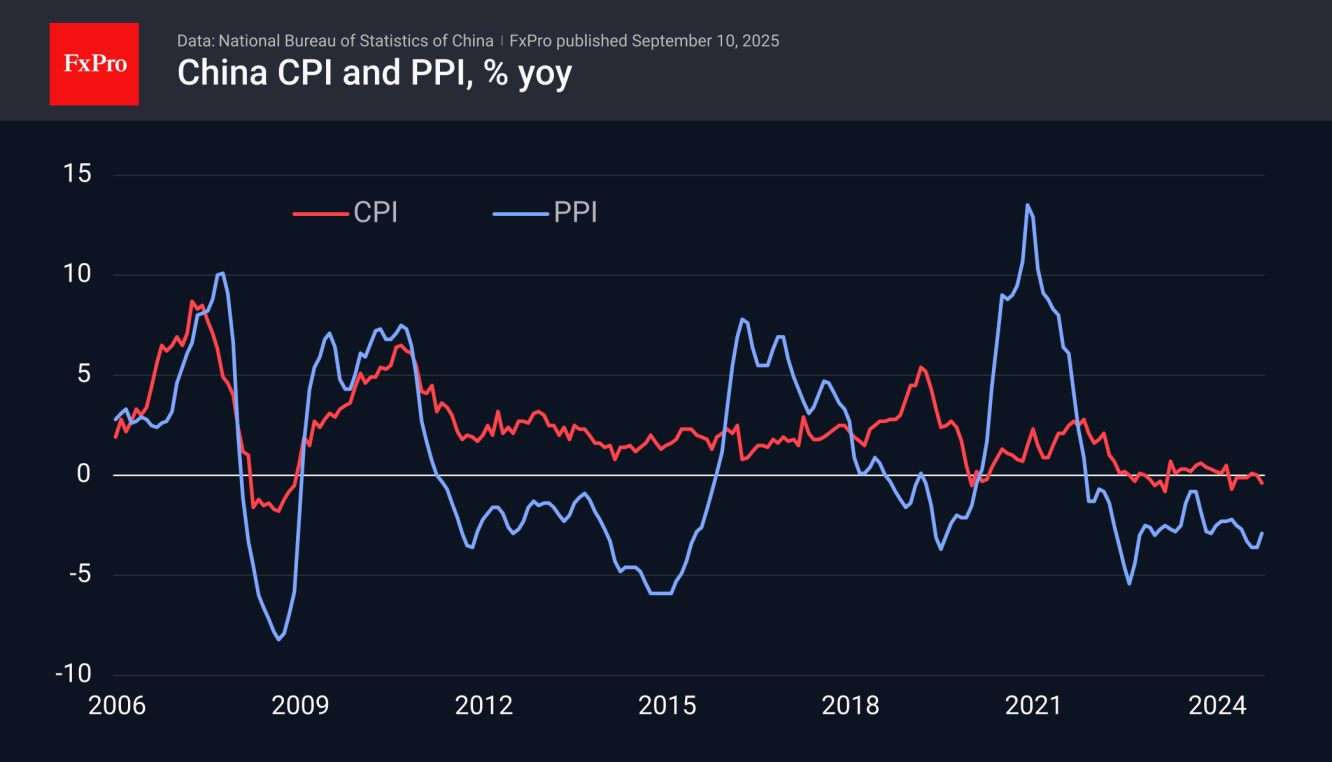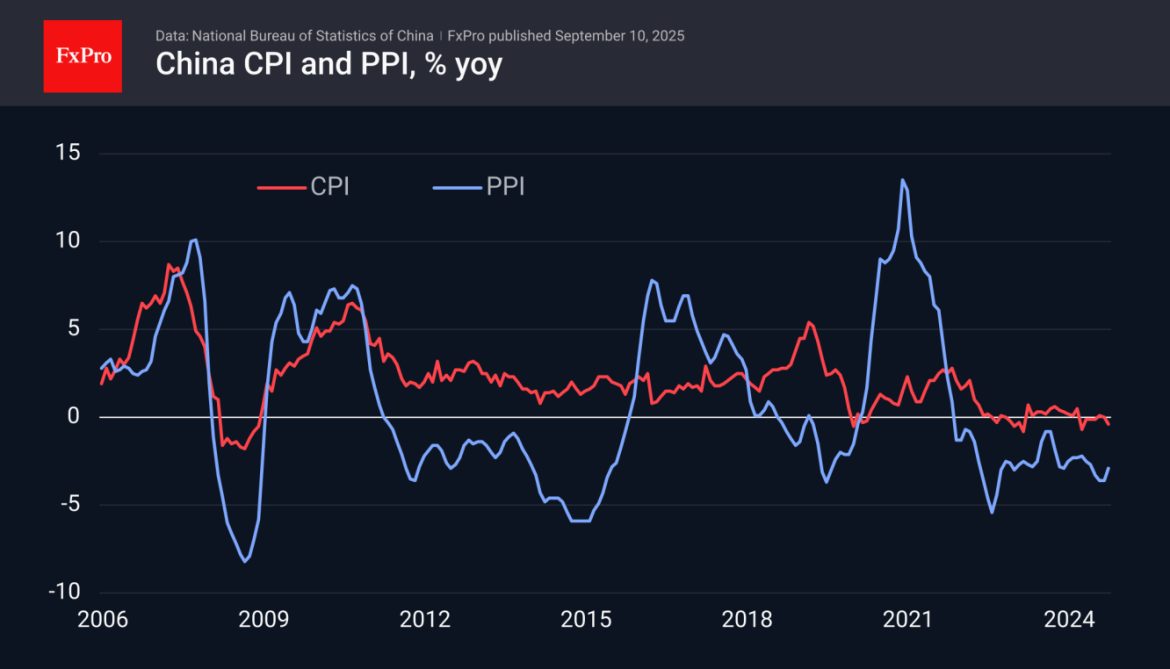

Deflationary pressures in China subsided in October as consumer prices began to rise after a prolonged downturn earlier this year, driven by demand during the holiday season, while decreases in wholesale prices also lessened.
Statistics from China’s National Bureau of Statistics published on Sunday indicated a consumer price index for October at 0.2%, surpassing analysts’ predictions of no change, or flat growth year over year. This figure marked the highest for the year and represented the first positive change in consumer prices since June.
On a monthly comparison, the CPI also increased by 0.2%, against analyst forecasts of no growth.
Food prices, previously a drag on the nation’s CPI, fell by 2.9% compared to the previous year. However, they saw a rise of 0.2% from the month before.
Deflation at the factory level lessened with prices declining by 2.1% year on year, which was slightly better than Reuters’ predictions for a 2.2% drop, marking three years in a negative phase. In October, producer prices saw a month-over-month increase of 0.1%.
“In October, policies designed to enhance domestic demand continued to show results, bolstered by the effects of the National Day and Mid-Autumn Festival holidays,” stated Dong Lijuan, chief statistician at the urban division of the National Bureau of Statistics.
Read more
While China’s initiatives to curb price competition and stimulate demand appear to be yielding results, reflected in a more than 21% rise in industrial profits for September, analysts caution that the reliance of local governments on tax income promotes ongoing production, heightening competition and excess capacity until substantial tax reforms are made.
China’s manufacturing activity in October fell more than anticipated, reaching its lowest point in six months, according to an official report released on October 30. Sub-indices related to production, new orders, raw material stock, and employment all showed deeper contractions, indicating a significant slowdown in manufacturing.
Chinese manufacturers have faced demand unpredictability due to ongoing trade conflicts with the U.S. this year and a lack of consumer confidence domestically as Beijing deals with a protracted housing market decline and challenges to exports.
The nation’s exports in October unexpectedly decreased, with shipments to the U.S. experiencing double-digit declines for the seventh month in a row, down 25%, as customs data released on Thursday revealed.
Looking ahead, export challenges could lessen as U.S. President Donald Trump and Chinese President Xi Jinping reached a trade truce during their meeting in South Korea on October 30, alleviating fears of an imminent trade war.
Last month, China’s leadership pledged to enhance domestic consumption as it outlined the economic strategy for the coming five years. The directive emphasized the need to “vigorously promote consumption,” according to a translation from CNBC.
The leaders stressed the importance of increasing consumption while also balancing it with “effective investment” and “committing to the strategic objective of expanding domestic demand.”
— Contributions to this report were made by CNBC’s Anniek Bao and Evelyn Cheng.

